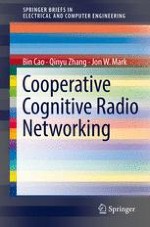This SpringerBrief examines the active cooperation between users of Cooperative Cognitive Radio Networking (CCRN), exploring the system model, enabling techniques, and performance.
The brief provides a systematic study on active cooperation between primary users and secondary users, i.e., (CCRN), followed by the discussions on research issues and challenges in designing spectrum-energy efficient CCRN. As an effort to shed light on the design of spectrum-energy efficient CCRN, they model the CCRN based on orthogonal modulation and orthogonally dual-polarized antenna (ODPA). The resource allocation issues are detailed with respect to both models, in terms of problem formulation, solution approach, and numerical results. Finally, the optimal communication strategies for both primary and secondary users to achieve spectrum-energy efficient CCRN are analyzed.
